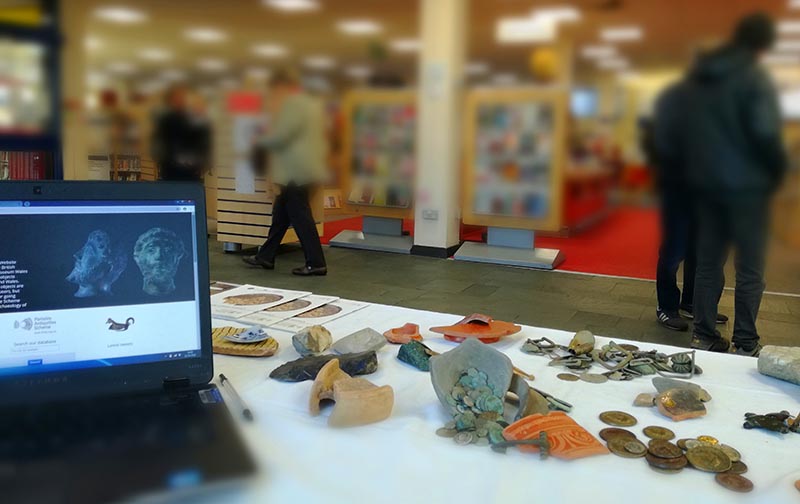
Archaeology News in Suffolk
A collection of archaeological news, projects and events in Suffolk from Suffolk County Council Archaeological Service

Image: gold and garnet beads from Rendlesham
Rendlesham Revealed: Anglo-Saxon Life in South-East Suffolk
Over the past year, the Archaeological Service at Suffolk County Council have been developing a community archaeology project called Rendlesham Revealed: Anglo-Saxon Life in South-East Suffolk, thanks to a grant from the National Lottery Heritage Fund.
This will be a 4-year community archaeology project which will explore the irreplaceable archaeology of the Deben valley in the heart of the Anglo-Saxon kingdom of East Anglia; home to the princely burials of Sutton Hoo and the site of the royal palace recently discovered at Rendlesham.
The project will build on and create new partnerships with local, regional and national organisations to directly engage local residents, schools, young people, landowners and volunteers from south-east Suffolk and Ipswich. Together we will connect the unique stories of these royal sites, putting them into the context of the wider Anglo-Saxon communities of which they were part. The knowledge gained about Anglo-Saxon life and death will be internationally significant.
The project is only in its 1-year Development Phase at the moment. Over this past year to progress our plans, we have undertaken an archaeological desk-based assessment, consultation with many informal partners, stakeholders, community groups and the public, as well as community training sessions in archaeological survey with local volunteers.
Following a (hopefully successful) second round application to the National Lottery Heritage Fund for a further £500,000 this August, we hope to run the project from 2020-2023.
When the project starts in 2020, there will be opportunities to be involved and trained in on-site archaeological survey and excavation, as well as experimental archaeology activities and workshops.
We'll be in touch again in January 2020 with more details, after we find out whether the National Lottery Heritage Fund application is successful.
In the meantime, keep reading to find out about some upcoming archaeology events happening in Suffolk.

Find out more about the Rendlesham Revealed project and past archaeological investigations.

Image: fragment of Roman armour after conservation © UCL
New Discovery: Roman Armour Depicting Hercules found in Suffolk
Earlier this year, this unusual piece of Roman copper-alloy armour was discovered by metal detecting in south-east Suffolk. After the Archaeological Service's Finds Recording Team went out to excavate and retrieve all the fragments, it was clear first aid conservation was needed. We took it to the conservation labs at the Institute of Archaeology, University of London for treatment where they micro excavated and cleaned all the fragments before trying to put them back together.
Their work is now complete and you can see that the armour depicts a male torso holding a club, a head and a lion's face; combined the fragments are a representation of Hercules.
Read about the conservation process on the UCL Conservation Lab Chat blog.

Have you recently discovered an archaeological object?
Curious to have a find identified? New or seasoned metal detectorist wanting to record your artefacts?
Join our Suffolk Finds Liaison Officers at the next Portable Antiquities Scheme Finds Day.
21st August 2019 - Ipswich Museum
30th August 2019 - Lowestoft Library
Drop in any time between 10am-3pm
For enquiries, please contact the Suffolk Finds Liaison Officers on 01284 741241
Volunteer at Clare Castle's Community Excavation 2019
Clare Castle Country Park are working in partnership with Cotswold Archaeology Suffolk to run a community archaeology project, funded by the National Lottery Heritage Fund, to enable local people to help investigate the archaeology within the country park.
Last year's excavations were focused in the outer bailey of the Norman motte and bailey castle. This year, they will be excavating inside the inner bailey to hopefully identify evidence of the medieval buildings, domestic life of the castle, and any signs of occupation pre-dating the castle.
